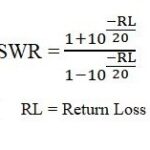Powerline networks utilize the existing electrical wiring in buildings to transmit data signals. Devices called powerline adapters plug into standard electrical outlets, converting data from Ethernet cables into signals that can travel through the electrical wiring. Other powerline adapters elsewhere in the building receive these signals and convert them back into Ethernet data, allowing devices to connect to the network without the need for dedicated Ethernet cables or relying solely on Wi-Fi.
Whether powerline is better than Wi-Fi depends on various factors. Powerline networks can offer more stable and consistent connections over longer distances compared to Wi-Fi, especially in environments where Wi-Fi signals may be weakened by walls or interference. However, Wi-Fi typically provides greater flexibility and mobility since it doesn’t require physical connections, making it more convenient for devices that move around frequently within a space.
The speed you experience with powerline networking can depend on several factors, including the quality of your electrical wiring, the distance between powerline adapters, and the electrical noise in your home or building. In ideal conditions, powerline adapters can achieve speeds comparable to wired Ethernet connections, but in practice, speeds may vary and could potentially be lower than what your internet service provider advertises, especially over longer distances or in older buildings with outdated wiring.
Determining if powerline networking is worth it depends on your specific needs and circumstances. If you struggle with Wi-Fi dead zones or unreliable signals in certain areas of your home or office, powerline can provide a more stable alternative without the need for extensive wiring or infrastructure changes. However, if your Wi-Fi performance is generally adequate and you don’t experience significant connectivity issues, investing in powerline adapters may not be necessary.
To connect to your powerline network, follow these steps: First, plug one powerline adapter into a power outlet near your router and connect it to the router using an Ethernet cable. Then, plug another powerline adapter into a power outlet in the area where you want to extend the network coverage. Connect this adapter to your device (e.g., computer, smart TV, gaming console) using another Ethernet cable. Once both adapters are powered and connected, they should automatically establish a network connection through the electrical wiring, providing internet access to your device.

